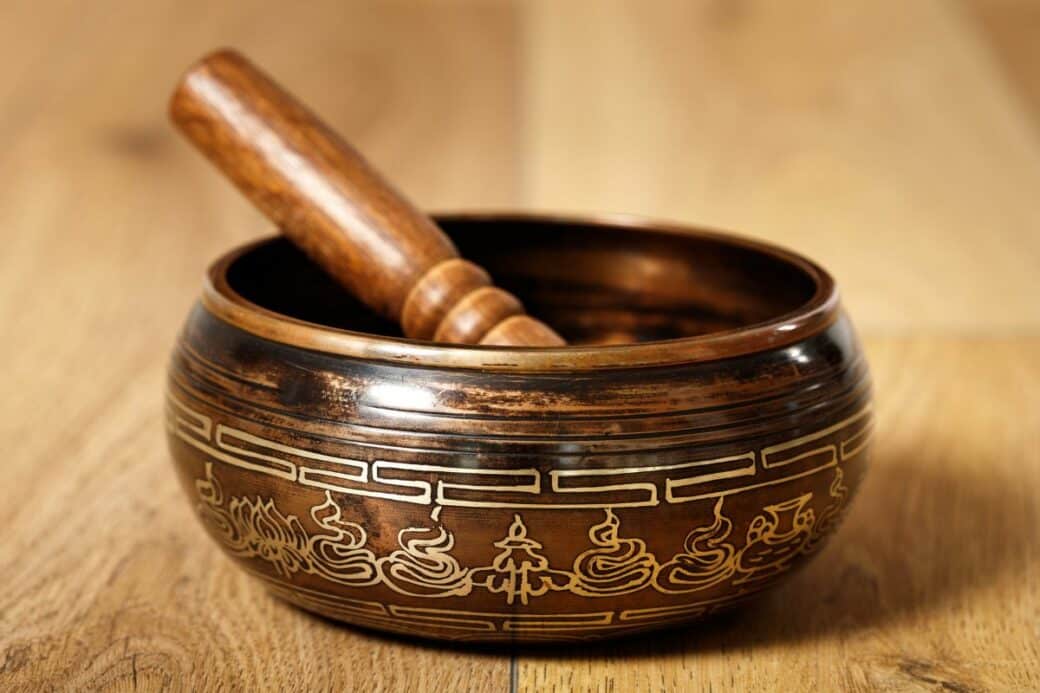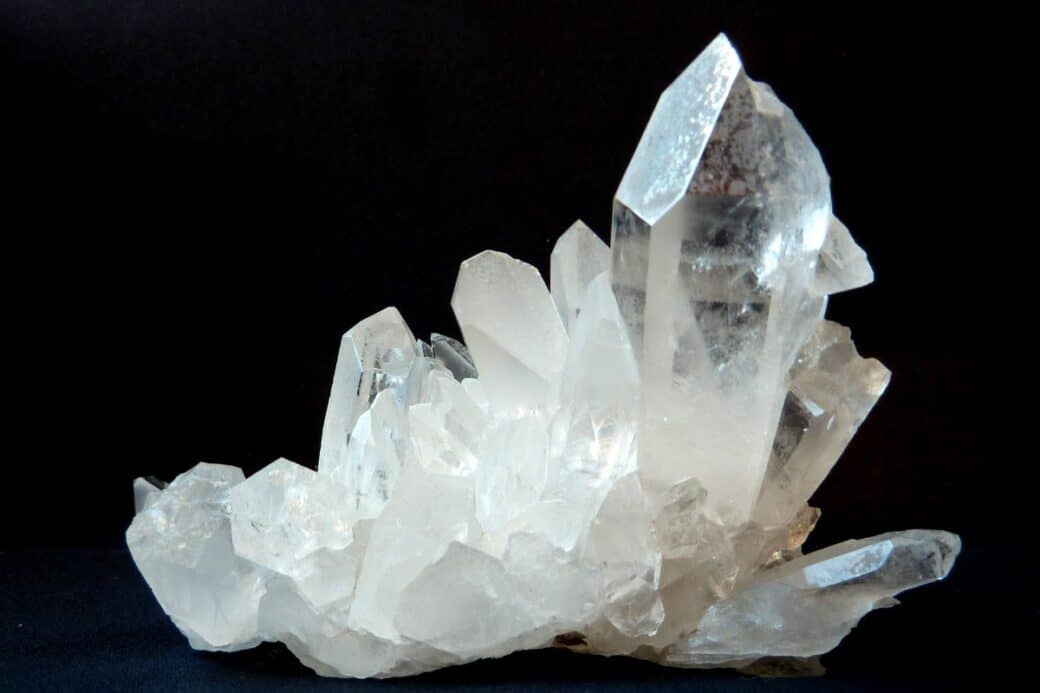Immerse yourself in the fascinating world of Tibetan bowls as you uncover the secrets of what they are made of. These mystical instruments have captivated people for centuries with their enchanting sounds and spiritual significance. In this article, you will embark on a journey to explore the materials used in the creation of Tibetan bowls, gaining insight into the craftsmanship and cultural heritage behind these extraordinary artifacts. Prepare to be enchanted as you discover the hidden elements that contribute to the unique and resonant qualities of these ancient bowls.

What Are Tibetan Bowls Made Of: Understanding Tibetan Bowls
The history of Tibetan bowls
Tibetan bowls have a rich history that dates back thousands of years. Originating in Tibet, these bowls served as important tools for both religious and cultural practices. They were traditionally used in Buddhist rituals, meditation, and healing ceremonies. Over time, the use of Tibetan bowls spread to other parts of Asia and eventually gained popularity in the Western world as well.
The significance of Tibetan bowls in meditation and healing
Tibetan bowls hold great significance in meditation and healing practices. The distinct sound produced by these bowls is believed to promote relaxation, deep meditation, and a sense of tranquility. When played, the vibrations of the bowl’s sound are said to help balance the body’s energy and chakras, promoting overall well-being. Some believe that the vibrations can also have a healing effect on physical ailments and emotional imbalances.
Traditional usage of Tibetan bowls
Traditionally, Tibetan bowls were used in various religious and spiritual ceremonies. They were played during meditation sessions as a way to create a calm and focused atmosphere. The bowls were also used to mark the beginning and end of rituals, as their sound was believed to purify the space and invite positive energy. In addition to their spiritual uses, Tibetan bowls were also used in traditional healing practices, believed to aid in the restoration of physical and emotional harmony.
Key Features of Tibetan Bowls

Distinct sound
One of the key features of Tibetan bowls is their unique and soothing sound. When played with a mallet or striker, the bowl vibrates and produces a resonant, harmonic tone. The sound is often described as calming, peaceful, and otherworldly. This distinct sound is what sets Tibetan bowls apart from other musical instruments and makes them ideal for meditation and healing practices.
Size and shape
Tibetan bowls come in various sizes and shapes, each with its own unique sound properties. The size of the bowl can affect the pitch and tone it produces when played. Larger bowls generally produce deeper, lower tones, while smaller bowls produce higher, brighter tones. The shape of the bowl can also impact the sound, with some bowls having a wider, more open shape for a fuller resonance, while others have a narrower, more focused shape for a clearer and more penetrating tone.
Design and patterns
Another interesting feature of Tibetan bowls is their intricate designs and patterns. These designs are often hand-carved or embossed onto the surface of the bowl. They can range from simple geometric patterns to intricate motifs of Buddhist symbols, mantras, and auspicious symbols. These designs not only enhance the aesthetic appeal of the bowl but also hold symbolic meaning and spiritual significance.
Primary Material: Bell Metal
What is bell metal
Tibetan bowls are primarily made from a traditional alloy known as bell metal. Bell metal is a specific type of bronze alloy consisting of copper and tin, along with trace amounts of other metals such as zinc and lead. This combination of metals gives the bowls their unique sound properties and durability.
Comparative analysis with other materials
While other materials like crystal, quartz, and even ceramic can be used to make singing bowls, bell metal is considered the most traditional and authentic material. Crystal and quartz bowls, although prized for their clear and pure sound, lack the rich and resonant tones produced by bell metal bowls. Ceramic bowls, on the other hand, are more fragile and can break easily compared to the sturdy bell metal bowls.
The durability of bell metal
Bell metal is known for its durability, making it a popular choice for Tibetan bowls. The combination of copper and tin gives the bowls a strong and robust structure that can withstand the test of time. This durability ensures that the bowls can be used repeatedly without losing their sound quality or structural integrity.
Secondary Materials in Tibetan Bowls
Usage of gold
In addition to bell metal, Tibetan bowls often incorporate other precious metals in their construction. Gold is one such secondary material that is used to enhance the beauty and spiritual value of the bowls. Gold is believed to amplify the positive energy and vibrations produced by the bowls, adding an element of luxury and sacredness to the overall design.
Inclusion of silver
Silver is another secondary material commonly used in Tibetan bowls. Similar to gold, silver is believed to enhance the spiritual properties of the bowls and offer protection against negative energies. The addition of silver also adds visual appeal, as its natural luster complements the overall design and craftsmanship of the bowls.
Other metals used
Aside from gold and silver, Tibetan bowls may also incorporate other metals such as iron, zinc, and nickel in their composition. These metals can subtly influence the sound quality and vibrations of the bowls, adding depth and complexity to the overall sonic experience.
Composition of the Seven Metal Tibetan Bowls
Metals used
Seven Metal Tibetan bowls are a specific type of singing bowl that are made from a combination of seven metals. These metals are traditionally copper, tin, iron, zinc, silver, gold, and mercury. Each metal contributes to the overall sound and energy of the bowl, creating a harmonious blend of vibrations.
Ratios of each metal
The exact ratios of each metal in a Seven Metal Tibetan bowl can vary depending on the tradition and craftsmanship of the bowl maker. However, the general rule is that copper and tin make up the majority of the alloy, with smaller amounts of the other metals added to create a balanced and harmonious resonance.
Relation to the seven celestial bodies
The choice of seven metals in these bowls is believed to be symbolic of the seven celestial bodies in the ancient Tibetan cosmology. Each metal corresponds to a specific planet or celestial body, and the combination of these metals is thought to align the vibrations of the bowl with the energetic influences of the cosmos.
Modern Production of Tibetan Bowls
Changes in material
With the advent of modern technology and global trade, the production of Tibetan bowls has evolved over time. While traditional bell metal bowls are still widely produced, there has been an increase in the use of alternative materials such as aluminum and brass. These materials offer a more affordable and readily available option for those who wish to experience the sound and benefits of Tibetan bowls.
Impacts on quality and authenticity
The use of alternative materials in modern Tibetan bowls can have an impact on the overall quality and authenticity of the bowls. While aluminum and brass bowls can still produce beautiful sounds, they may not possess the same depth, richness, and resonance as bell metal bowls. Additionally, some collectors and practitioners prefer the traditional bell metal bowls for their historical and cultural significance.
Comparison with traditional methods
Although modern production methods may differ from traditional craftsmanship, both approaches have their own merits. Traditional methods often involve handcrafting the bowls using ancient techniques, resulting in unique and individualized pieces. Modern production methods, on the other hand, allow for greater consistency and accessibility, making Tibetan bowls more widely available to a larger audience.
The Craftsmanship of Tibetan Bowls
Methods of construction
The construction of Tibetan bowls involves a meticulous and holistic approach. The process typically begins with the selection and purification of the metals. The metals are then melted together and poured into a mold to form the shape of the bowl. After the bowl has cooled and solidified, it undergoes a series of hand-finishing techniques, including hammering, filing, and polishing, to refine its shape and enhance its sound quality.
Hand-hammering technique
One of the most distinctive features of Tibetan bowls is their hand-hammered texture. Skilled artisans meticulously hammer the outer surface of the bowl using a combination of precise hammer strikes and rhythmic patterns. This technique not only gives the bowl its characteristic appearance but also plays a crucial role in shaping the sound and vibrations produced by the bowl.
Significance of intricate designs
The intricate designs found on Tibetan bowls serve both aesthetic and spiritual purposes. These designs are often inspired by Buddhist symbols, deities, mantras, and auspicious patterns. Each design holds symbolic meaning and significance, reflecting the spiritual essence and intention behind the bowl. The process of creating these designs requires precision and attention to detail, showcasing the craftsmanship and devotion of the artisans.
Choosing Genuine Tibetan Bowls
Distinguishing features of authentic Tibetan bowls
When selecting a Tibetan bowl, there are several distinguishing features to look out for to determine its authenticity. Authentic Tibetan bowls are often handmade, exhibiting slight variations in shape, design, and sound quality. They may also display signs of hand-hammering and intricate carvings. Additionally, genuine Tibetan bowls tend to have a rich, resonant sound that sustains for a long duration.
Sound quality
The sound quality of a Tibetan bowl is a critical factor in determining its authenticity and overall value. A genuine Tibetan bowl will produce a clear, resonant, and harmonious sound when played. The sound should have a sustained duration and richness, with no noticeable distortions or impurities. It is recommended to try out different bowls and listen carefully to the sound they produce before making a purchase.
Price considerations
Authentic Tibetan bowls, especially those made from bell metal and traditional craftsmanship, tend to be more expensive compared to bowls made from alternative materials. The price is often reflective of the quality, rarity, and cultural significance of the bowl. However, it is important to be cautious of overly inflated prices and to research reputable sellers or artisans who specialize in the creation and sale of genuine Tibetan bowls.
Maintenance of Tibetan Bowls
Cleaning and handling
Proper cleaning and handling of Tibetan bowls are crucial to maintain their quality and sound. The bowls should be gently cleaned using a soft cloth or brush to remove dust and debris. Harsh chemicals or abrasive cleaners should be avoided, as they can damage the surface of the bowl. When handling the bowl, it is recommended to hold it from the base or rim to prevent any accidental drops or damage.
Preservation of sound quality
To preserve the sound quality of a Tibetan bowl, it is advisable to store it in a dry and protected environment. Exposure to moisture or extreme temperatures can affect the structural integrity and sound properties of the bowl. Additionally, it is important to handle the bowl with care and avoid striking it against hard surfaces, as this can lead to cracks or other damage that may impact its sound quality.
Preserving the integrity of metals
Over time, Tibetan bowls may develop a natural patina or oxidation on their surface. This is a normal occurrence and can add to the aesthetic appeal of the bowl. To preserve the integrity of the metals, it is recommended to avoid using abrasive cleaners or polishing agents that may strip away the patina. Instead, gentle polishing with a soft cloth can help maintain the shine and luster of the bowl while preserving its original appearance.
Health and Healing Properties of Tibetan Bowls
Effect of sound vibrations
The sound vibrations produced by Tibetan bowls are believed to have therapeutic effects on the mind, body, and spirit. As the bowl is played, the vibrations create a deep sense of relaxation and calmness, helping to reduce stress, anxiety, and tension. The vibrations also have the ability to entrain brainwave patterns, bringing about a meditative state and promoting a sense of inner balance and harmony.
Role in spiritual and physical well-being
Tibetan bowls have long been used as tools for spiritual and physical healing. The sound and vibrations produced by the bowls are believed to help restore energy flow, balance the chakras, and clear any energetic blockages in the body. This can lead to improved overall well-being, increased vitality, and a heightened sense of spiritual connection. Tibetan bowls can be used in various healing modalities, including sound therapy, meditation, and energy work.
Scientific research backing healing properties
While the healing properties of Tibetan bowls have been recognized for centuries, scientific research has also started to explore the effects of sound therapy on human health and well-being. Studies have shown that sound vibrations can have a positive impact on reducing stress, boosting immune function, and improving mood. While more research is still needed, these findings provide further validation and support for the use of Tibetan bowls in promoting health and healing.



